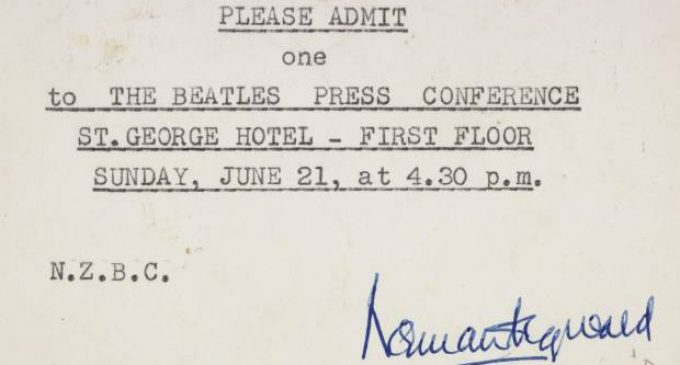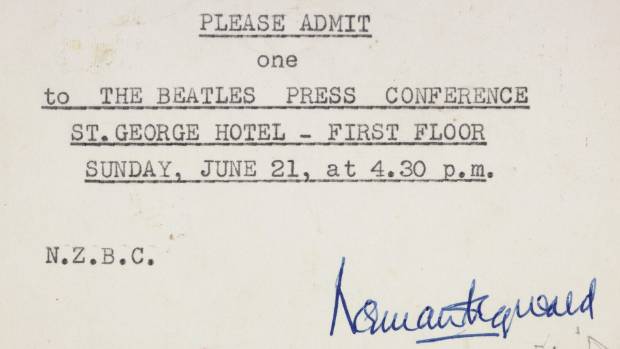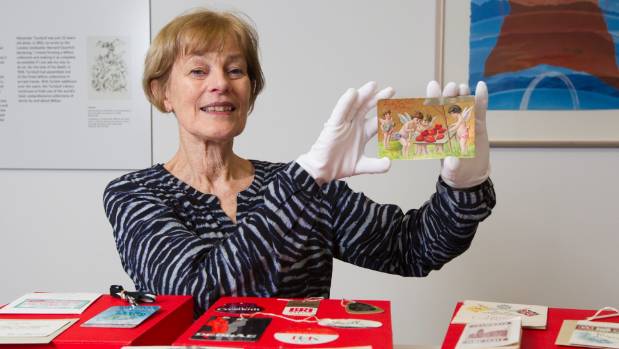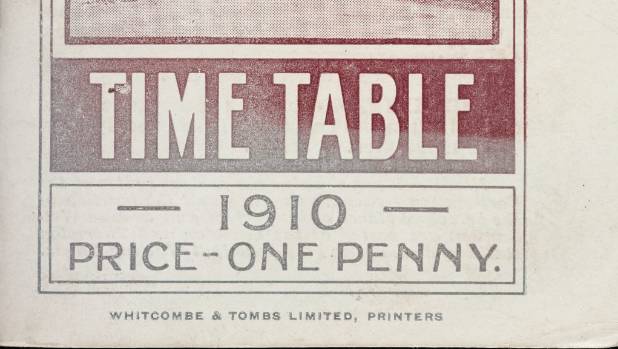Find the Beatles backstage pass from 1964 – exhibition champions relics of popular Kiwi culture | Stuff.co.nz

A tramways timetable and drivers’ license wouldn’t have been thought of as precious objects when they were printed early last century, and many such items were thrown away.
However, to the curator of a new exhibition at Alexander Turnbull Library, they’re symbolic treasures of everyday life.
Barbara Lyon is pulling them out of the archives and giving them a showing as part of an exhibition, Humble: The Life of 100 Small Objects.
Ross GiblinAlexander Turnbull Library curator Barbara Lyon finds delight in the everyday printed objects many of us throw away but which she collects and will put on display in an upcoming exhibition.
“The exhibition should cast light on the corners of the minutiae of everyday life,” she says.
The library’s ephemera collection is not well understood but covers printed material only intended for a short life. Ranging from small tickets to two-metre long posters, the holding has more than doubled through donations and acquisitions to 220,000 items since Lyon took up the role in 1991.
A lucky journalist who got to interview the Beatles in 1964 has kept her press pass, which will be on display as part of a exhibition of small printed objects.
“Things like this shed light on everyday little things in popular culture that you don’t think about keeping, and they’re very familiar to you at the time.
When you look back, you remember them. The exhibition draws together items that are physically small but valuable because they illuminate our history in a way that other objects don’t.”
Many of the objects in the exhibition would no longer be used today, or their functions would be digitised.
One of the earlier drivers’ licenses issued, in 1928, three years after licenses were made compulsory here.
Public transport timetables are now available at the click of an app, along with restaurant menu.
“If we tried to have an exhibition of this functional material in the future based on today, it would be a very different look.”
Some are historical relics, such as the cigarette cards that were a collectors item in the 1920s and 1930s but were phased out during World War II to save paper. The library has 400 to 500 in its collection. A card celebrating the aviator, Jean Batten, was printed in England in 1937 and included in cigarette packets sold here. In Humble, it will be shown near a rugby Weetbix card of Rodney So’Oialo from 2010.
The 1910 Wellington Tramway timetable.
Lyon had to be selective about what to pull out of the archives, and so she narrowed it down to specific themes, such as items which were persuasive or promotional, and things used to identify and label. She has also tried to show how the items we use today once looked in the past.
A tollgate ticket from 1864 to access the route alongside Wellington harbour is near a Snapper transport card used today. A lucky journalist who got into a Beatles press conference in 1964 donated her typed press card to the library’s collection, which will be shown near a 2006 backstage pass to a Fat Freddy’s Drop concert.
The earliest item in Humble is an 1837 small booklet promoting New Zealand in Britain, while another very old item is a Taranaki book club ticket from 1858.
A series of road safety stamps from 1938.
A former Rotorua dressmaker, Norma Evans, donated 60 of her former clothing labels from the 1970s to the collection, while badges worn during the 1970s Homosexual Law Reform protests are evidence of a period of New Zealand social history.
Until the 1920s, drivers sat behind the wheel without a license, until that became law in 1925 when one-year licenses were introduced. Lyon has included one of the earliest licences issued by Palmerston North Borough Council in 1928.
So who usually views the collection of everyday things that many of us take for granted? Researchers, writers, and family historians, according to Lyon.
Encouraging us to hold on to our everyday printed items and consider donating them to the library, she says: “The tramway timetable was used by a novelist in a recent book. In recent decades, the study of New Zealand history has got broader and deeper than it used to be, and now people are looking more and more at popular culture and everyday life.”









There are no comments at the moment, do you want to add one?
Write a comment